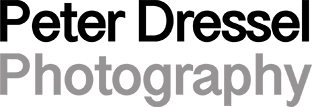Getting a beautiful exterior shot under adverse conditions.
As architectural photographers, especially in New York, sometimes we have one day and one specific time to shoot an exterior.
To photograph this building, not only did I have flat light with a white sky, but I was severely limited on where I could put the camera. The building was very close to the street, and there was a fence in front of it. I usually like to feature the front of the building and some of the side. I walked everywhere with a handheld camera with a zoom lens, going back and forth between 24mm and 17mm, and couldn’t get far enough away from the building to get a composition that was primarily focused on the front of the building.
Also, there were a lot of unwanted objects around the building, especially on the side, as this building was still under construction.
After 30 minutes of frustration, I found one spot with a composition I could live with, which had my tripod wedged between two cars, but I could not get the entire building in the frame. Going to a wider lens would’ve gotten the whole building, but would’ve been ugly. The only answer was to use the tilt-shift lens and do a stitch.
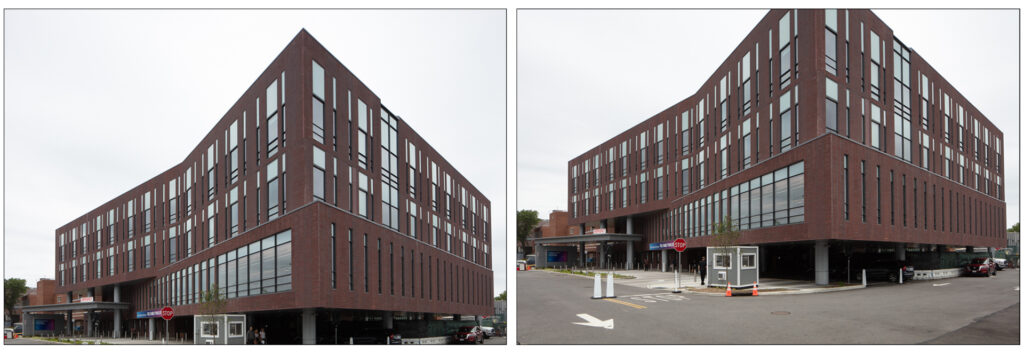
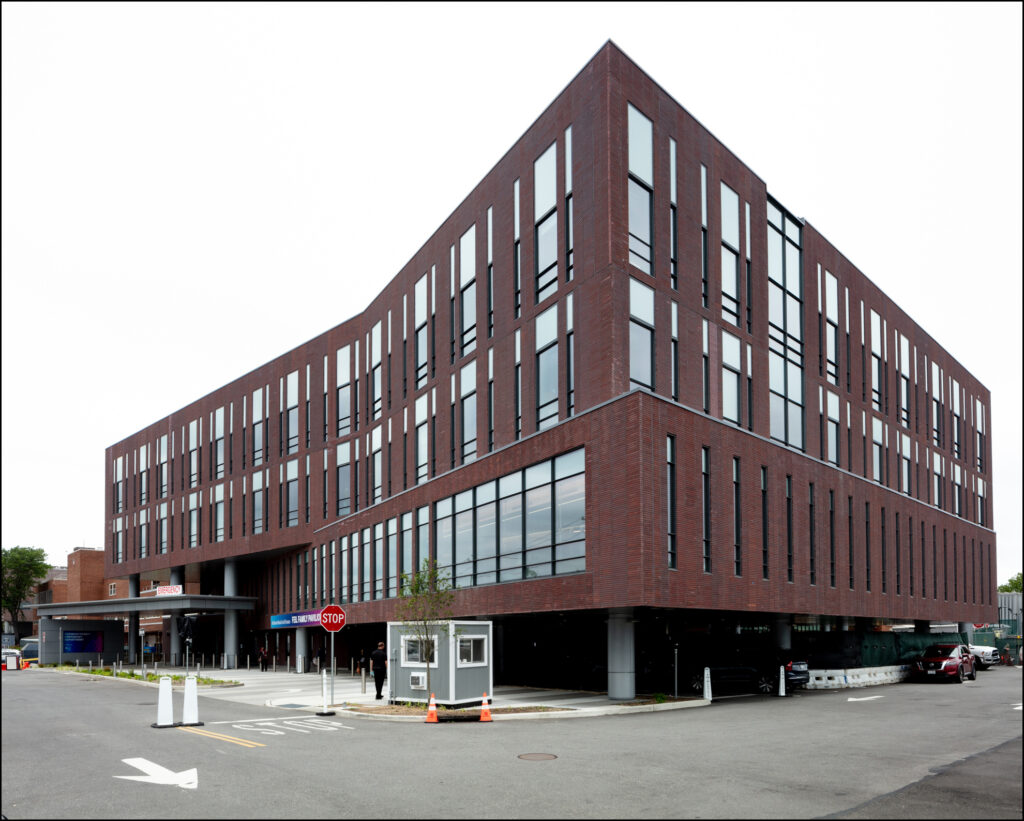
As we do with all shots, I bracketed two stops below and two stops above normal for each part of the stitch.

Back in my studio, I used three exposures: normal (base), bright, and dark. For the dark image, I used Lightroom’s sky select feature and cranked the white balance down, turning the grey sky blue.
After compositing, I started with the most accurate white balance using the parking lot as my neutral. Still looks kind of blah.
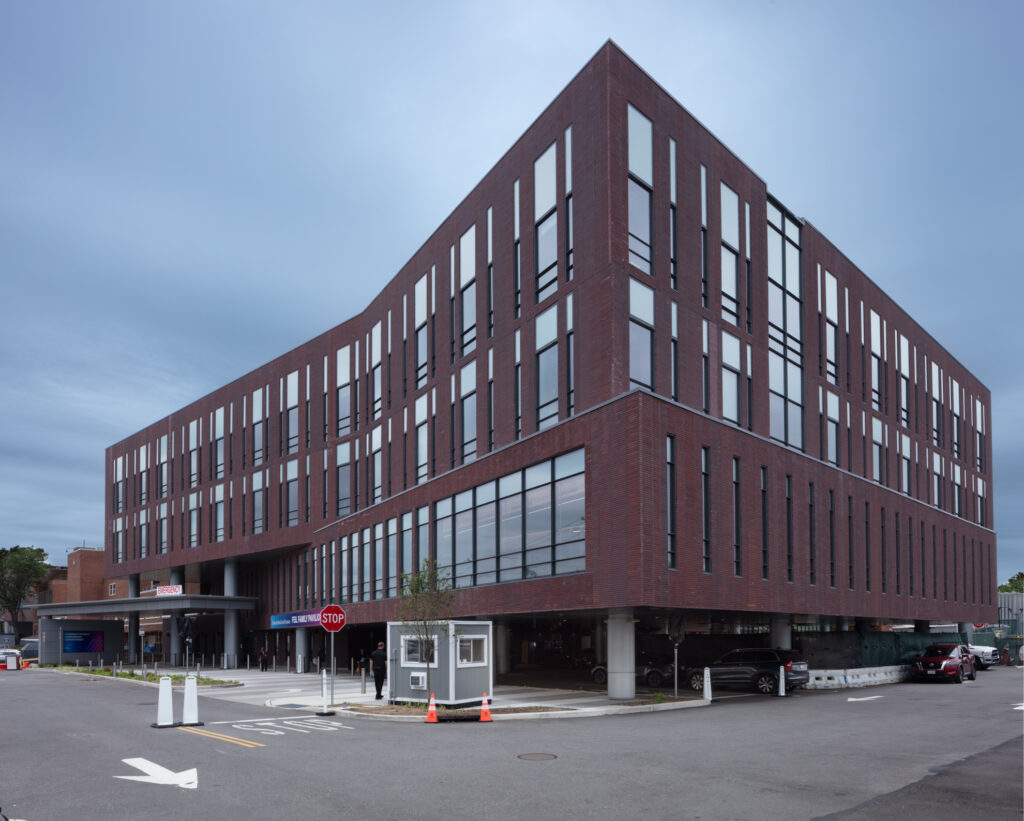
To mimic more directional lighting, I darkened the side of the building and lightened the front. I also warmed up the color temperature to mimic magic hour light. Next, I added an adjustment layer mask to the center of the building, then raised the highlights a little bit.
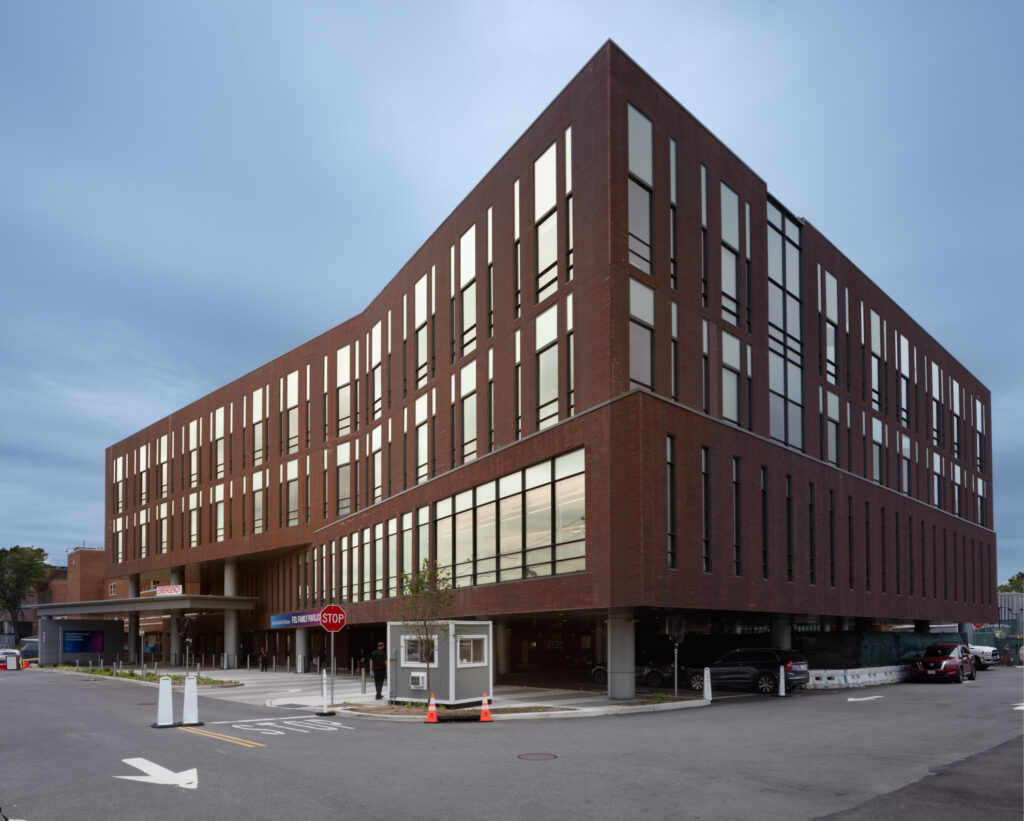
Next, using Photoshop’s generative fill, I removed all the distractions. The stuff in the front was pretty straightforward, but I couldn’t get rid of the guard shed with anything I could live with. The side, however, took a lot of time and trial and error to get something I felt was acceptable enough to hand to the client.
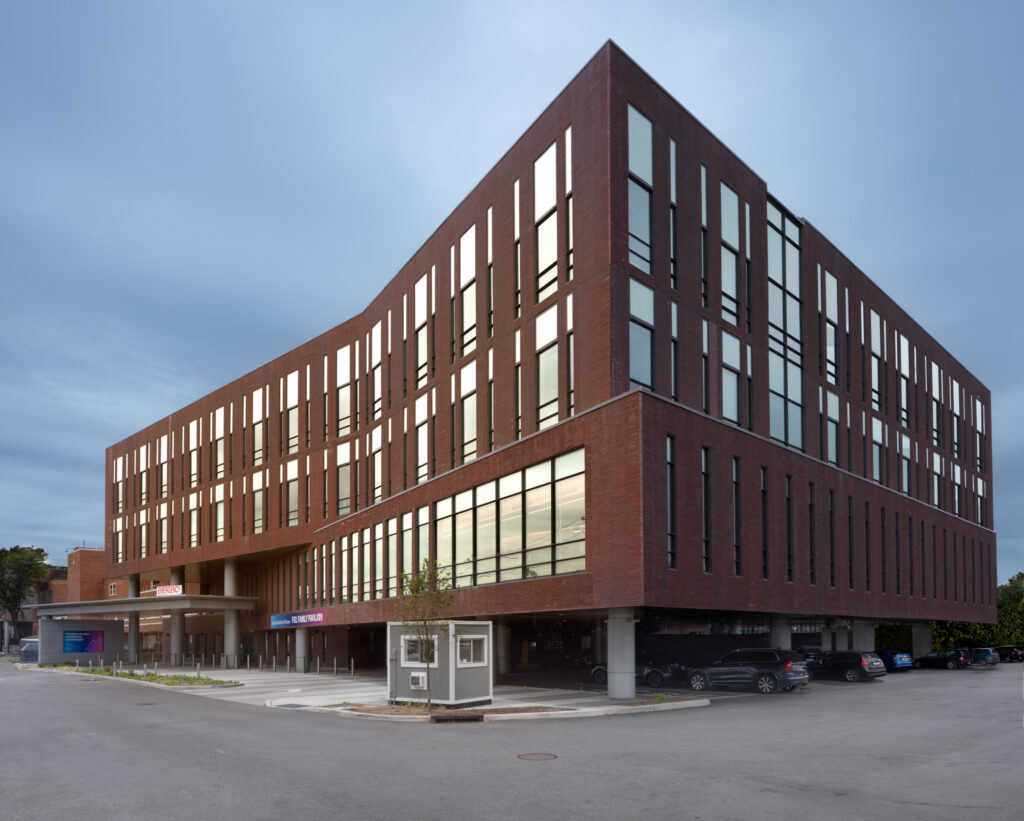
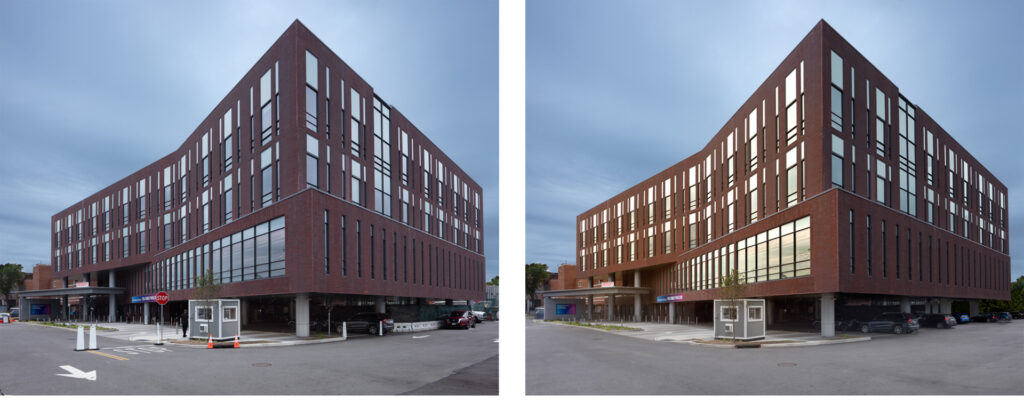
So, using stitching, layer adjustment masks, and generative fill, I was able to turn less-than-ideal conditions into a photograph I’m happy with.
To see more of my work, check out my website.
